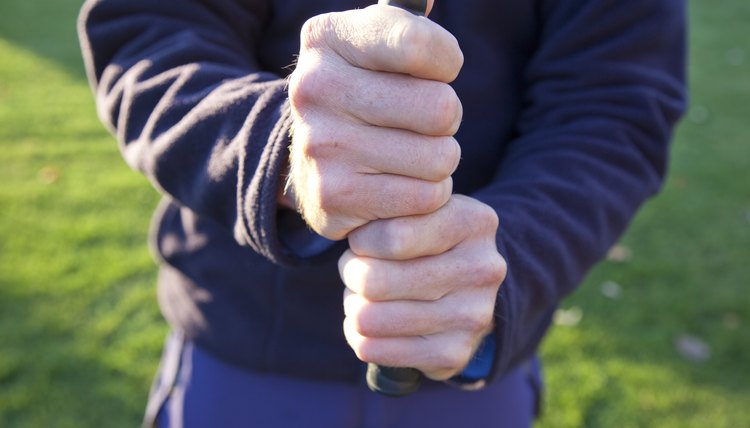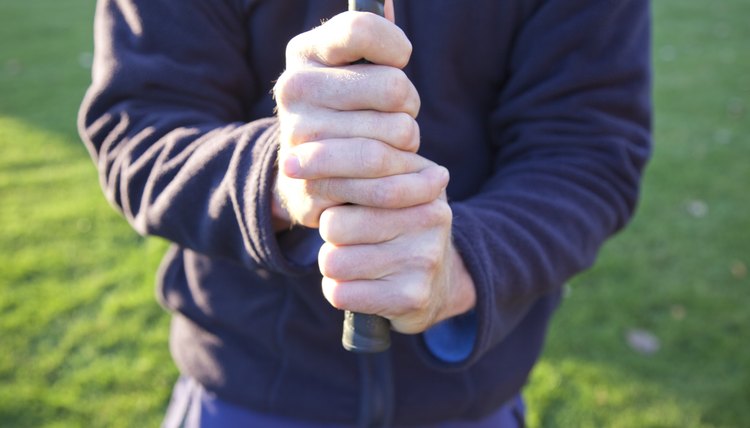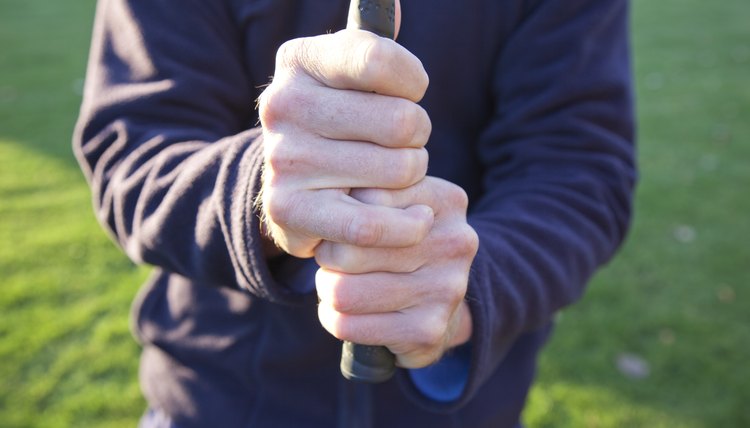Ways to Grip a Golf Club

There are various ways to grip a golf club before swinging it, each with its own perks and benefits. By selecting the right grip for your swing, you can find the proper balance of control over the ball and distance of the ball off of the face of the club.
Overview
There are various ways to grip a golf club before swinging it, each with its own perks and benefits. By selecting the right grip for your swing, you can find the proper balance of control over the ball and distance of the ball off of the face of the club.
Ten Finger Grip

Rochelle Buley/Demand Media
The 10-finger grip is also often referred to as the baseball grip, due to its similarities to the grip that a baseball player uses to hold a bat. As with all grips, both hands are wrapped around the grip with the pinkie higher on the club than the thumb, and the dominant hand lower than the non-dominant hand. Unlike in other grips, however, there is no crossover between the two hands, as each hand has its own distinct section of the club to grab, with the dominant hand wrapped around the club just below the non-dominant hand.
The 10-finger grip gives the player the most control over the movement of the club, allowing for more powerful swings. However, it provides less control over the club head at the point of impact, making it not ideal for players who can handle the weight of the club with another grip.
Interlocking Grip

Rochelle Buley/Demand Media
The interlocking grip is a one of the two more common grips.
While it requires more strength to control the weight of the club through the swing path, and will not allow for a golfer to swing the club as fast as with the 10-finger grip, by interlocking the pinkie of the dominant hand with the index finger on the non-dominant hand, a golfer keeps more control over the orientation of the club face at the moment of impact, making it a more accurate grip. To use the interlocking grip, instead of resting the pinkie of his dominant hand against his non-dominant index finger, a golfer spreads his non-dominant index and middle fingers slightly and passes the pinkie between them, so that it rests atop his non-dominant hand at the base of the fingers.
Overlapping Grip

Rochelle Buley/Demand Media
The overlapping grip provides the least control over the weight of the club, however, it provides for the most control over the club head's face. The overlapping grip is often preferred by seasoned golfers who can generate enough speed without losing control of the club without the extra stability of the interlocking grip, allowing them to take advantage of the increased accuracy the overlap provides. The height on the club of the dominant hand is similar to with the interlocking grip, however the dominant pinkie is rested atop the crease between the index and middle fingers of the dominant hand, which are placed close together as in the 10-finger grip, instead of between them.
Writer Bio
This article was written by the CareerTrend team, copy edited and fact checked through a multi-point auditing system, in efforts to ensure our readers only receive the best information. To submit your questions or ideas, or to simply learn more about CareerTrend, contact us [here](http://careertrend.com/about-us).
